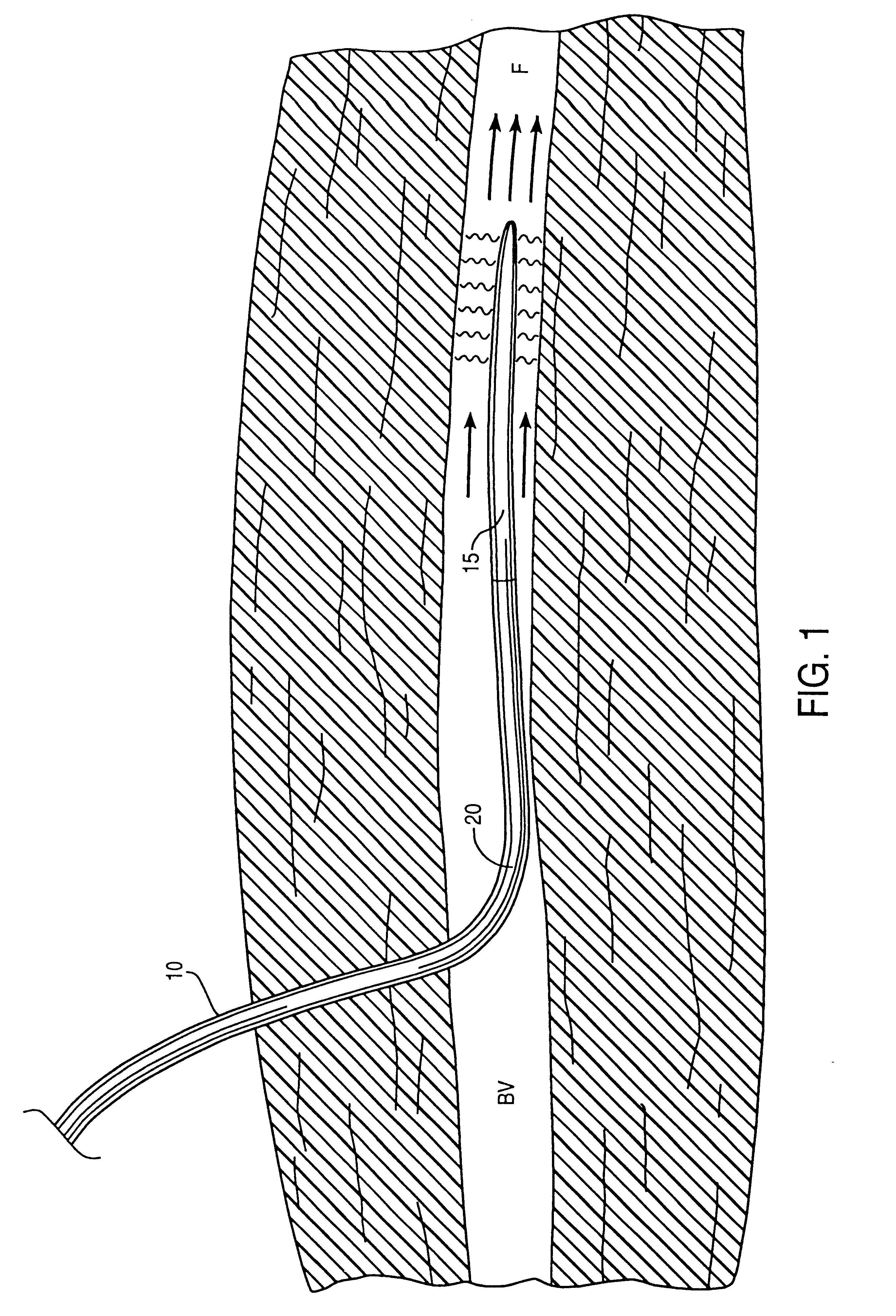Catheter system for controlling a patient's body temperature by in situ blood temperature modification
a catheter system and patient technology, applied in the field of selective modification and control of the body temperature of patients, can solve the problems of patient hypothermia, patient's hypothermia of either, and the excess of the body's internal heat production ability,
- Summary
- Abstract
- Description
- Claims
- Application Information
AI Technical Summary
Benefits of technology
Problems solved by technology
Method used
Image
Examples
Embodiment Construction
The present invention provides methods and apparatus for selectively modifying and controlling a patient's body temperature by warming or cooling the patient's blood in situ. According to the present invention, a catheter is inserted through a puncture or incision into a blood vessel in the patient's body. By warming or cooling a portion of the catheter, heat may be transferred to or from blood flowing within the vessel and the patient's body temperature may thereby be increased or decreased as desired. During the procedure, the patient's body core temperature may be independently monitored and treatment may continue until the patient's core temperature approaches the desired level, usually the normal body temperature of about 37.degree. C. Such methods will find use in treating undesirable conditions of hypothermia and hyperthermia and may also be used to induce an artificial condition of hypothermia when desired, e.g., to temporarily reduce a patient's need for oxygen. In such a c...
PUM
 Login to View More
Login to View More Abstract
Description
Claims
Application Information
 Login to View More
Login to View More - R&D
- Intellectual Property
- Life Sciences
- Materials
- Tech Scout
- Unparalleled Data Quality
- Higher Quality Content
- 60% Fewer Hallucinations
Browse by: Latest US Patents, China's latest patents, Technical Efficacy Thesaurus, Application Domain, Technology Topic, Popular Technical Reports.
© 2025 PatSnap. All rights reserved.Legal|Privacy policy|Modern Slavery Act Transparency Statement|Sitemap|About US| Contact US: help@patsnap.com



